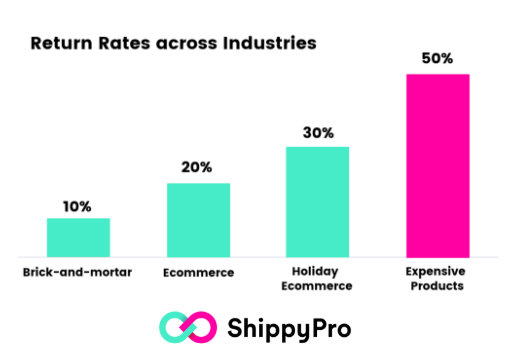How to Write a Great Return Policy for your Ecommerce [Complete Guide]
You can do everything to keep your item descriptions accurate and your shipments secure, and they might still come back to you. This is especially true when it comes to fashion sales.
Returns are not something that you only need to worry about if you’re in the fashion world. Return rates are higher than ever and how you deal with them can have critical implications on your customers’ satisfaction.
In this article we are going to learn how to drastically reduce the Return Rate of your Ecommerce thanks to a Great Return Policy.
What is an Ecommerce Return Policy
Did you know that research from Invespcro.com suggests 67% of online shoppers will check the return policy before making a purchase?
That’s why you have to deal with it. So, how can we define a return policy?
An Ecommerce Return Policy is the agreement where you inform customers about your policies regarding returns and refunds. Not a simple set of rules, but increasingly a real competitive weapon.
As every seller knows returns can be like a double edge weapon:
- attacking profit margins
- gutting conversion rates
- ultimately threatening your business.
Return Rates across Industries
According to Forrester and Star Business Journall the cost of online and offline return deliveries, only in the US market, are estimated to cost $550 billion by 2020, with an increase of 75% compared to 2016.
Going further ecommerce returns are growing even faster increasing 95% in the same period.
Aggregated and complied data across industries confirm the previous data. As we can see in the graph below, brick and mortar return rates amount between 8% and 10% while online return rates at 20%, more than double.
The situation get worse if we look at ecommerce marketing holidays. During this period returns surge to 30% or even as high as 50% for expensive products.
The real problem is that your customers are buying from you with the intention of immediately returning the items, making a speculative use of the return policies that companies have adopted.
Returns are the new normal
Otherwise returns are the new normal and central to customer experience. But, they don’t have to be cancer, negatively affecting profitability. It can be tempting to try to eliminate returns.
Writing a Great Return Policy for your Ecommerce is so important to balance the business and customer needs without damaging the conversion rate of the purchase funnel.
In the end, a clear Ecommerce Return policy shows that you, the ecommerce business owner, stand by your product, and pride yourself on a great customer service experience.
How to write a great return policy: 5 Best Practices
When it comes to writing or updating an Ecommerce Return Policy, there are some rules that can not be ignored. Here we have summarized 5 best practices to write your ideal return policy:
1. Don’t Hide your Policy, your customers should be able to find information quickly and effectively. In this sense, the best place to put your return policy is in the purchase confirmation emails. Being your customer’s biggest advocate is a great way to foster lifetime loyalty.
2. Adapt the Return Policy of your Ecommerce to your specific business and target audience. Use plain english and avoid using words that send people running for a dictionary. Try to not use expressions such as “you must” or, one of the most used of all time, “we are not responsible for”
3. Tell the customers what they can expect from you, determine what is the best solution for your own business. You can even try to do a A/B test to see which policy works best in terms of conversion, customer satisfaction and, last but not least, profit.
4. Be clear, don’t be confusing and try to answer to question like:
- What’s the procedure for a return or exchange?
- Does the customer need to use your packaging ora can they use their own?
- Do they need to include the order slip?
- Is there a limited time in which a return or exchange can be completed?
- Who pays for the shipping?
5. Educate your staff and be prepared to mistakes. We all make mistakes but it is how you handle them taht matters.
3 Examples of Ecommerce Retun policies
Let’s see now three examples of Ecommerce Return policy. Check how the guidelines set out before adapt to the different business models
Remember that writing and displaying a clear policy reduce the time spent processing returns!
Be Clear: SanLorenzoBikini Return Policy
San Lorenzo Bikini does this extremely well on their Return policy page. They use design and clear language to comunicate their policy.
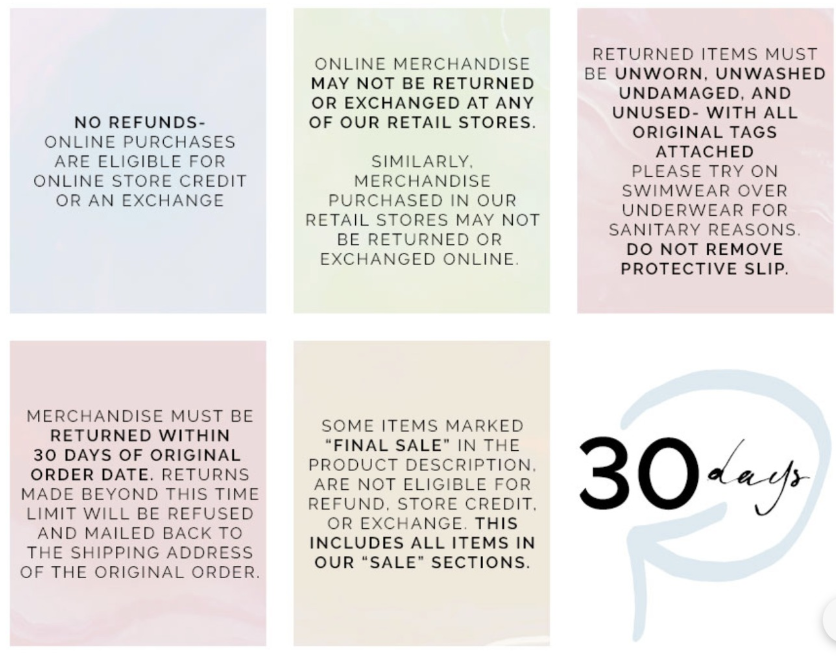
Tell the Customers what they can Expect from You: AustinBazaar Return Policy
As you can image, returning a purchase is not a fun experience. Particularly if you have to pay for the shipping cost.
Austin Bazaar makes it clear that returns are totally free for customers. Furthermore if there was a mistake or accident with the order, they will even pay for the shipping costs both ways.
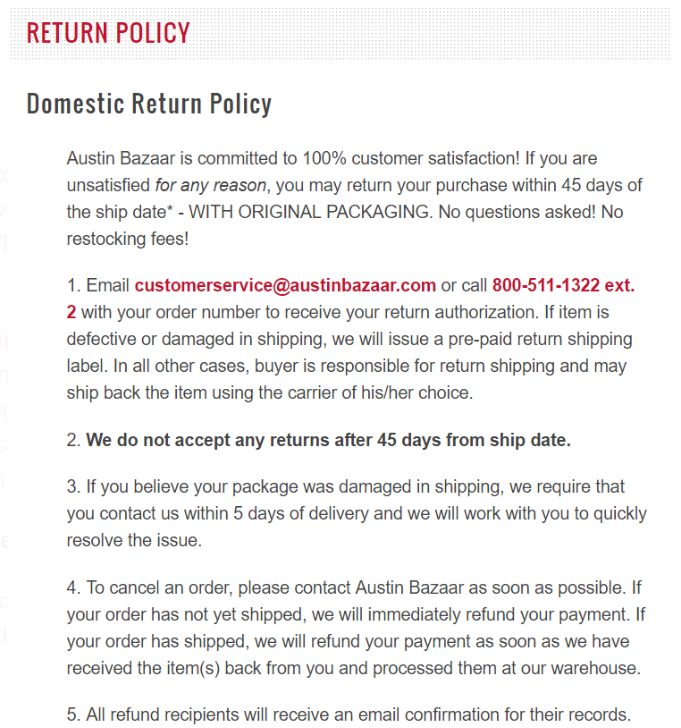
Adapt the to your Target Audience: RedsBaby Return Policy
Another good strategy is to help customers providing different options to arrange their own return.
In other words keeping returns a low effort experience keeps customers coming back in the future.
RedsBaby sells strollers and other baby accessories online, something that could be very bulky and difficult to return.
That’s why they offer a concierge return service for a small price. Simply email their support team and you’ll never need to think about the return.
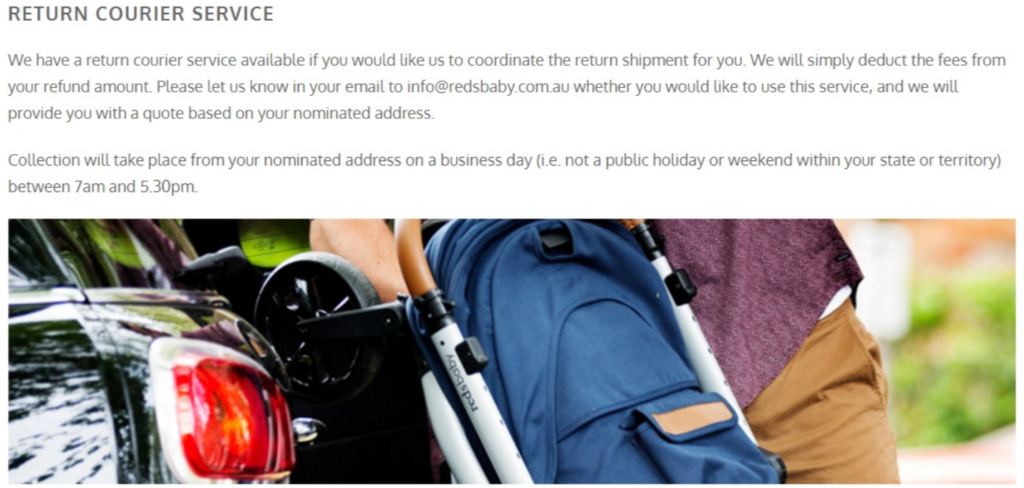
Wrapping Up
In conclusion we have seen how an effective return policy can help your business increase customer satisfaction, its loyalty and the conversion rate at the time of purchase.
Then we analyzed what are the best guidelines to follow to draw up a return policy that makes management of returns simple from the point of view of the company and that of the customer.
Finally we analyzed some cases of how these guidelines can be applied to the different business sectors. Now it’s time for you to write your own Ecommerce Return Policy.
ShippyPro is the complete shipping software for online and offline retail. With Label Creator, Track & Trace, Easy Return and Analytics features, our software simplifies your shipping operations. ShippyPro integrates with over 180 carriers and 80 sales channels, making it compatible with a wide range of products and use cases.



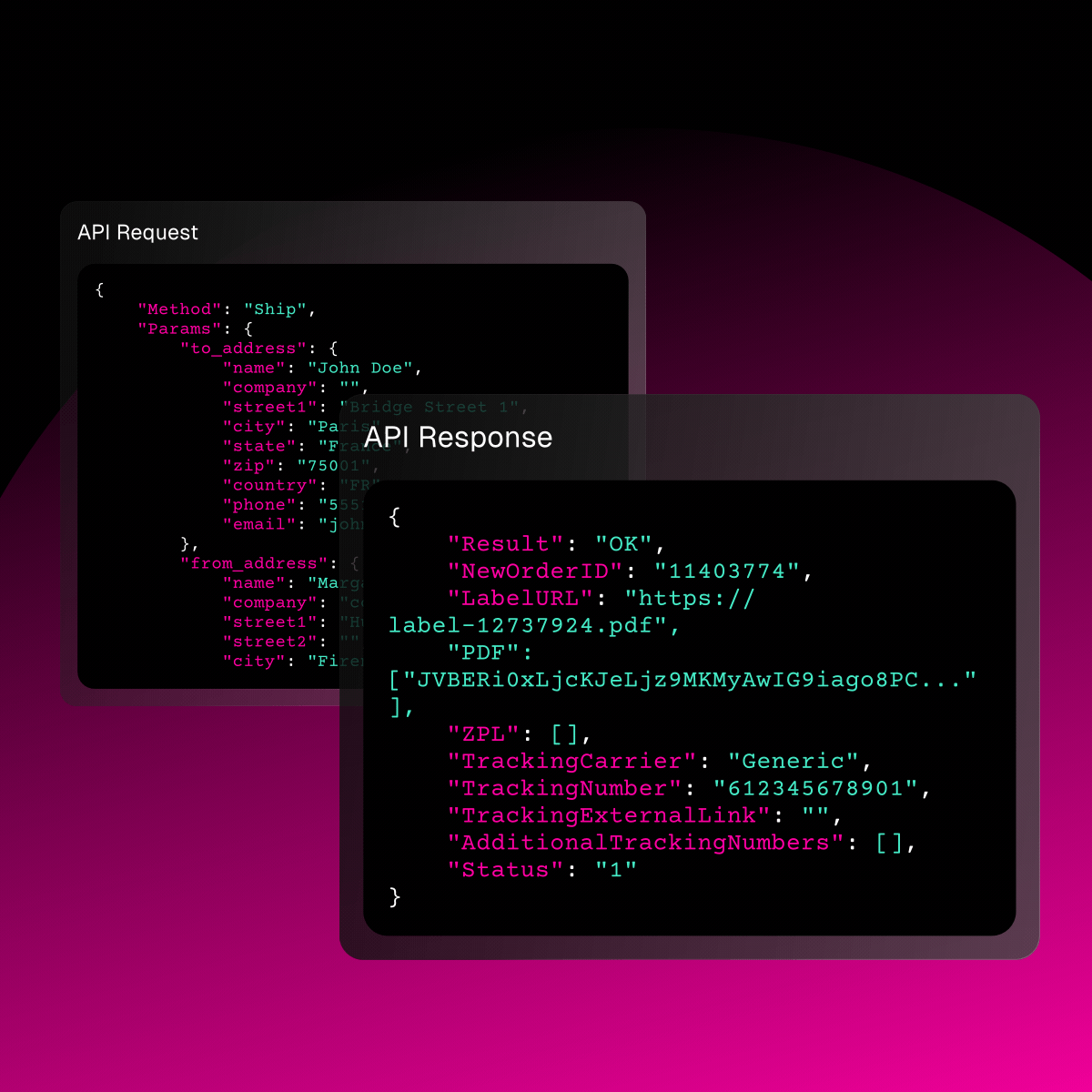


.webp)



.webp)

